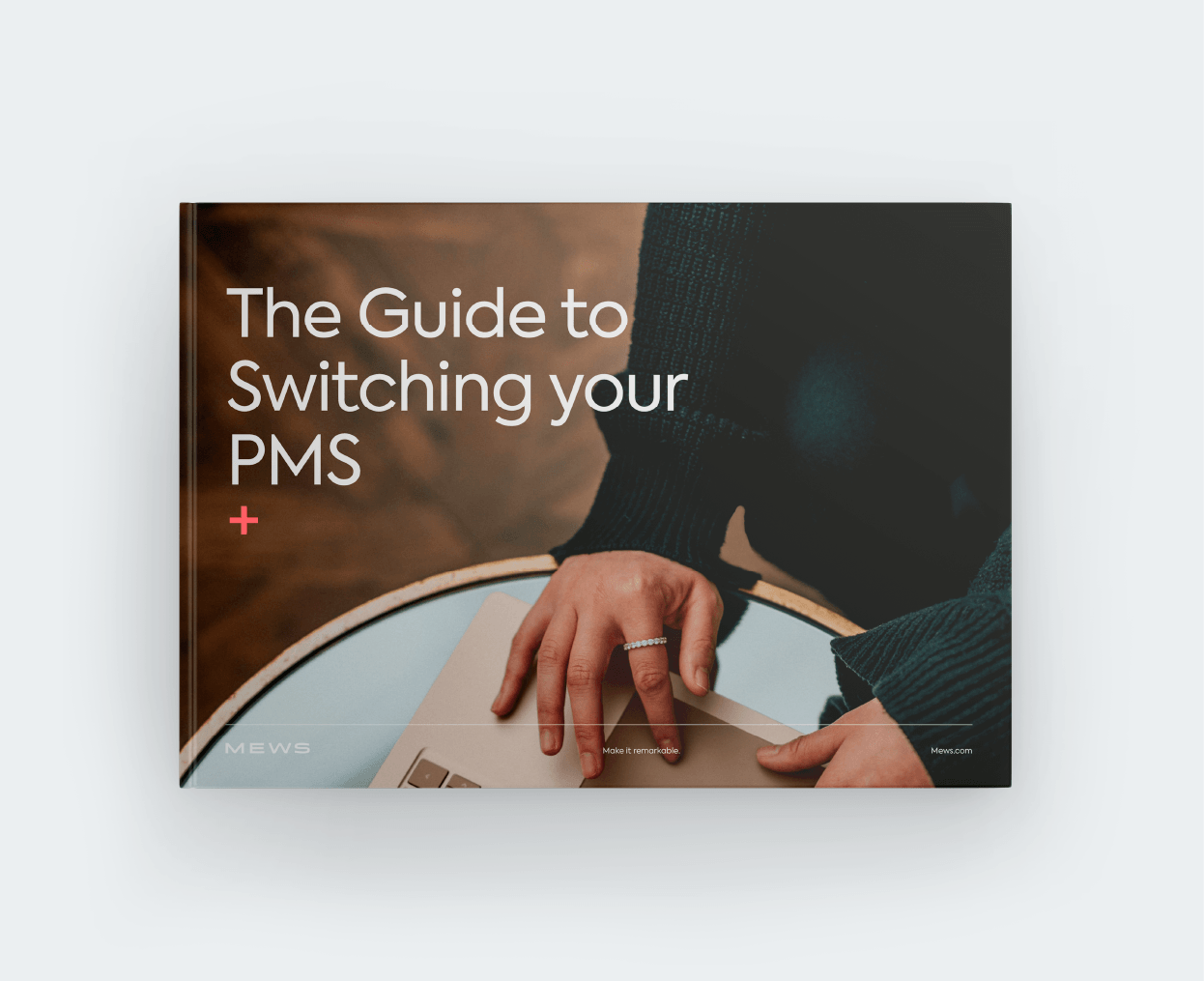When it comes to guest satisfaction, few things matter more than billing transparency. Whether you're running a boutique property or a global chain, getting the financial side of the guest experience right is non-negotiable – and that's where hotel folios come in.
Hotel folios offer a clear, itemized view of every charge made during a stay. More than just a receipt, they're essential tools for seamless operations, faster check-outs, and stronger guest trust.
In this guide, we'll break down what hotel folios are, why they matter, the different types you should know about, and how to manage them effectively with the help of modern technology.
Table of contents
What is a hotel folio?
A hotel folio – sometimes called a guest folio or master folio – is a master document that tracks all financial transactions related to a guest's stay. It's a running account of every charge and payment, updated in real-time from check-in to check-out.
A standard folio might include:
- Room rates
- Food and beverage charges
- Room service
- Spa treatments
- Minibar usage
- Taxes and fees
- Payment history and outstanding balance
Folio data is captured automatically in most modern property management systems (PMS), and it becomes the foundation for the guest invoice at check-out.

Why are hotel folios important?
Friction-free billing leads to smoother operations and happier guests. After all, there are few things more frustrating to hotel guests than incorrect charges at the end of their stay.
Hotel folios:
- Ensure billing accuracy by tracking charges as they happen
- Speed up check-out by having everything ready and itemized
- Prevent disputes by offering complete transparency
- Boost trust and satisfaction – because nobody likes surprises on their final bill
They also reduce back-office headaches by aligning accounting, front desk, and F&B departments in one shared view of guest spending.
Hotel folio vs hotel invoice: what's the difference?
Hotel folios and invoices are closely linked, but they're not quite the same.
- A hotel folio is a dynamic, real-time record of all guest transactions – from the moment of check-in. It's updated continuously throughout the stay and is primarily used by hotel staff to track and manage charges.
- A hotel invoice is a final, legally binding document issued at check-out. It includes tax and billing details, guest contact information, invoice numbers, and a final amount due. Once created, it can't be edited (unless there's an error in the billing details).
Think of the folio as the running tab – and the invoice as the final bill.
5 types of hotel folios
Depending on the guest or the booking, not all folios are the same. Here are the most common types:
1. Guest folio
A guest folio is the standard folio used to track all charges incurred by a guest during their stay at your hotel, such as room rates, minibar charges, and so on.
2. Non-guest folio
A non-guest folio is used to record charges for people using hotel services without staying overnight – like a local visitor dining at the restaurant.
3. Split folio
A split folio lets you divide charges between two or more parties. It's great for business travelers whose company covers some costs, but not all.
4. Employee folio
Employee folios track hotel expenses made by staff, such as on-duty meals or room stays.
5. Master folio
A master folio, or a group folio, consolidates charges from multiple rooms under one account – ideal for events, group bookings, or corporate clients.

How to understand an hotel folio
A hotel folio is essentially a detailed hotel bill that records all charges and payments made during a guest's stay. It will include guest and stay information, such as the guest's name, room number, room type, and check-in/check-out dates.
You will also find line items listing each transaction, including room charges, food and beverage expenses, minibar usage, spa treatments, taxes (like occupancy or city tax), and the associated payment methods.
When reviewing a hotel folio, it's important to:
- Match the stay dates with the correct room rate
- Check for duplicate charges
- Ensure the right discounts or rates were applied
- Look for any unauthorized charges
- Confirm the final balance is accurate
What should you include in your hotel folio?
A clear hotel folio should include everything your guest – and your staff – needs to quickly understand all charges at a glance.
Guest & stay details
- Guest name
- Room number
- Check-in/check-out dates
- Folio number
- Hotel name and address
Transaction line items
- Date of charge
- Description (e.g. "Room service - dinner", "Mini bar - drinks")
- Charges and credits
- Running balance
Summary section
- Total charges
- Total payments
- Final balance due
- Payment method used at check-out
How to manage hotel folios effectively
Now you know how to create a hotel folio, it's time to explore the ways you can manage your folios effectively to improve operations, guest experience, and revenue.
1. Use the right type of folio
Not all guests are the same, which is why you need to match the folio to the booking. Use:
- Guest folios for individual guests
- Master folios for group bookings or events where multiple rooms or services are billed to a single payer
- Split folios when billing needs to be shared between parties
Proper folio usage avoids billing confusion and supports a smoother check-out.
2. Automate with your front desk software
Manual data entry invites errors. Integrate your folios with your front desk management system, point-of-sale system (POS),# and accounting systems to automate data flow and ensure real-time accuracy. Tools like Mews make it easy to assign charges, process payments, and close out folios with confidence.
3. Train your team
A hotel folio is only as effective as the team managing it. This is why front desk staff training and clearly established standard operating procedures (SOPs) are so important. Make sure your team understands folio workflows, knows how to spot discrepancies, and can clearly explain charges to guests when needed.
4. Set expectations with guests
Be transparent from the start. Let guests know about deposits, incidentals, and what's included in their stay. Surprises at check-out don't make for loyal customers.
5. Use hotel folio data to personalize the experience
Itemized charges aren't just for accounting – they're valuable insight. Analyze folio data to learn what guests love (and don't), and use that intel to tailor future offers, upsells, or loyalty perks. Using real data not only helps you personalize the guest experience but also set yourself apart from the competition.
Conclusion
Hotel folios are more than just paperwork – they're a key part of delivering a professional, personalized, and pain-free guest experience in the hospitality industry.
From ensuring billing accuracy to powering better guest insights, getting hotel folios right means smoother check-outs, happier guests, and more efficient operations.
And with a modern PMS like Mews, folios practically manage themselves – giving your team more time to focus on what matters most: hospitality that feels effortless.
If you're ready for a PMS change, check out our guide below.
Download "The Guide to Switching Your PMS"


2026 Hospitality Industry Outlook
Download now
Table of contents
Hospitality hot takes straight to your inbox



.webp)
